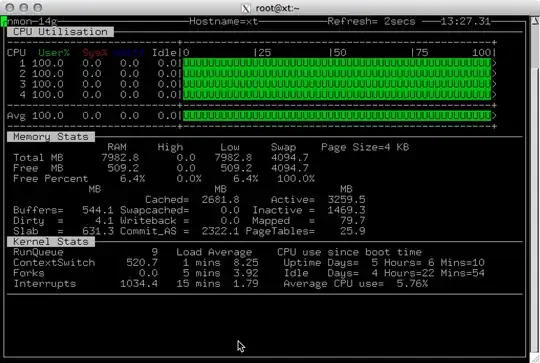I am using Oracle VM. I want to perform a stress test on system parameters like CPU, RAM etc. Can anyone help me out with the ways in which I can load the parameters with high load like using all the virtual cores, RAM starvation etc.
Asked
Active
Viewed 750 times
1
-
can you clarify what OS the hypervisor is on, whether you want to crash the OS with the hypervisor, or a virtual machine running through oracle VM and then what OS the virtual machine is running, and also is this on x64 or Sparc? – Fegnoid Oct 09 '14 at 12:57
-
Hypervisor is running on Linux Server release 5.8 OS (x86_64). I am looking for crashing the VM within some time limit. – Animesh Jain Oct 09 '14 at 13:30
2 Answers
0
I use the following rb.sql script.
-- The Following script shows the time it takes to insert 1 million rows in a database.
-- I used it to determine that:
--
-- 1) Optimized Databases perform in relation to the hardware they run on,
-- and all the databases on 1 platform run within 10% of each other.
-- 2) When Rollback, Temp or Redo logs share the same underlying disks as
-- the "alan" table, the insert takes up to twice as long.
-- 3) When the rollback segments, Temp segments or redo log buffers are > 20 meg as
-- opposed to less than 1 meg, the inserts run 2 to 5 times faster.
-- By making the log_buffer and Rollback extents sizes close to 32k,
-- the inserts run up to 9 times slower.
set feedback off
set termout off
drop table alan;
set termout on
create table alan (name varchar2(30)) storage (initial 32k next 1m) logging noparallel storage(buffer_pool default);
insert into alan values ('alan');
insert into alan values ('alan1');
insert into alan select * from alan;
insert into alan select * from alan;
insert into alan select * from alan;
insert into alan select * from alan;
insert into alan select * from alan;
insert into alan select * from alan;
insert into alan select * from alan;
insert into alan select * from alan;
insert into alan select * from alan;
insert into alan select * from alan;
insert into alan select * from alan;
insert into alan select * from alan;
insert into alan select * from alan;
insert into alan select * from alan;
insert into alan select * from alan;
insert into alan select * from alan;
insert into alan select * from alan;
insert into alan select * from alan;
insert into alan select * from alan;
set timing on
insert /*+ PPEND */ into alan logging select * from alan /* This line shows the elapsed time. */
;
set timing off
-- select max(sequence#) from v$loghist;
set feedback on
set termout off
--drop table alan;
set termout on
I call it with rb16.sql:
@rb
@rb
@rb
@rb
@rb
@rb
@rb
@rb
@rb
@rb
@rb
@rb
@rb
@rb
@rb
@rb
And I call the rb16.sql with call_rb16.sql:
@rb16
@rb16
@rb16
@rb16
@rb16
@rb16
@rb16
@rb16
@rb16
@rb16
@rb16
@rb16
@rb16
@rb16
@rb16
@rb16
Since the rb.sql script inserts into the alan table, you can make multiple oracle users and insert from multiple signons. The rb.sql script identifies bottlenecks.
Alan Kendall
- 81
- 2
0
It's really easy to just use the Linux stress utility to selectively load some or all of the system features. It's available via YUM for download...
Think of stress as a load-generator. Forcign the system to crash is a different effort. You can use this to see how things operate under load, but I doubt that any sane configurations from the stress utility will induce a system crash.

Also see: Max CPU load in *nix